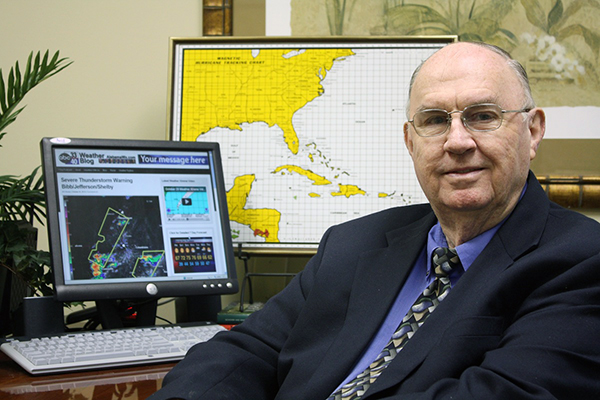How Do Hurricanes Form?
Credit: NASA Space Place
DISCUSSION: With the start of the 2018 Hurricane Season quickly approaching. This discussion will outline what exactly makes a hurricane, and how it forms.
The components of a hurricane are as follows: a source of low pressure, significant moisture in the atmosphere coupled with steep lapse rates, a large distance from the equator, deep and warm waters, and a lack of wind shear.
There are several ways that a hurricane can originate. An easterly wave can form into a mesoscale convective system and go into a westward path off the coast of Africa. A source of low pressure can also originate in the Intertropical Convergence Zone; however, it needs to be in a slightly higher altitude in order for it to turn into a hurricane. A Tropical Upper Tropospheric Trough, also known as a TUTT, can be used to help guide the low pressure. Simply put, this TUTT is a trough that is situated in the upper levels, at about 200 milibars, near the tropics. An old frontal boundary will also be conducive to hurricane development; however, it should be near the Caribbean and/or the Gulf of Mexico in order for it to develop.
No matter where the origin of the hurricane is, the low-pressure system has to be near an atmosphere that is moist throughout and the lapse rates in the area need to be high enough to promote instability and storm development. In order for hurricane development to progress, the system needs to be at least 5° away from the equator. The system also needs to be over warm waters, mainly where the water is 26.5°C/80°F over a depth of 50 meters to 150 meters.
One these conditions are met, a tropical depression is formed and numbered. In order for the tropical depression to upgrade to a tropical storm, wind speeds will need to increase to at least 39 miles per hour and form a Central Dense Overcast. A Central Dense Overcast is a large area of thunderstorms surrounding the circulation center of the tropical cyclone. Once wind speeds increase to 74 miles per hour, the tropical storm is officially a hurricane.
To learn more about tropical cyclones, click here!
© 2018 Weather Forecaster Jennifer Naillon
AlabamaWX is pleased to partner with the Global Weather and Climate Center team for outstanding posts about our atmosphere. Visit them at https://www.globalweatherclimatecenter.com for more great information!
Category: Partner News Stories
















